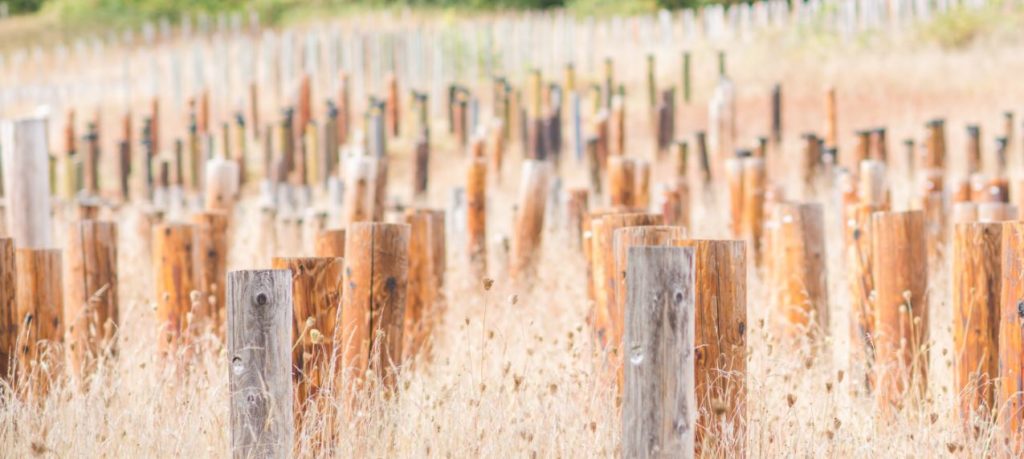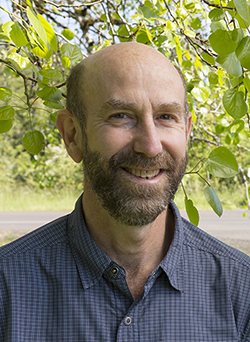The story of Oak Creek: From storage facility to top-notch greenhouse
Visitors to the Oak Creek Greenhouse on Western Boulevard in Corvallis enjoy world-class technology and a variety of seedling studies – plants growing in just about every place one can look. But it wasn’t always like that.
When Assistant Professor Carlos Gonzalez-Benecke arrived at Oregon State in 2015, he toured all of the facilities that were available to him for research projects. One was the Oak Creek Greenhouse, but unfortunately, at the time, it could only facilitate small seedling studies due to the large amounts of timber and nursery materials stored there.
“Once I became oriented with my work here, I made revitalizing the greenhouse a priority,” he says.

Interim Dean Anthony S. Davis and a team of graduate students (Carson Alberg, Matthew Davis, Kaitlin Gerber, Rebecca Sheridan and Christina St. John) shared the vision for a functioning greenhouse that took advantage of all the space and potential the Oak Creek location offered. So, everyone worked together to quickly clean out the space.
Once the space was clear, Gonzalez-Benecke considered what greenhouse characteristics plants like Douglas-fir seedlings need to have to thrive while making the space as flexible as possible for a variety of uses. “Plants need resources to grow: water, nutrients and radiation,” Gonzalez-Benecke says.
Nutrients are easily provided by fertilizers, but Gonzalez-Benecke gave more thought to water and radiation.
“We wanted to be able to manipulate those factors,” he explains. “This is why we installed an extensive irrigation system, as well as fixing the roof that allows us to better adjust environmental conditions inside the greenhouse. We can provide more light or provide a total black out in certain sections of the greenhouse.”
The heating system and fans also manipulate factors including temperature, relative humidity and air movement.
The greenhouse hosts several research projects for the College of Forestry and the College of Agricultural Sciences.
“For our purposes, the greenhouse is perfect,” Gonzalez-Benecke says. “We are proud of it, and we are happy to be a resource for the college and the broader campus community. We invite visitors and members of the industry to come tour it.”
One of Gonzalez-Benecke’s Ph.D. students, Patricio Alzugaray, has a long-term study of Douglas fir seedlings at the greenhouse.
Seedlings can be produced in a wide array of containers, and Alzugaray is testing the benefits and disadvantages of using biodegradable, paper containers. The first phase of the study involved growing the seedlings inside the greenhouse and taking root morphology and physiology measurements.
In October 2019, Alzugaray outplanted the seedlings on five sites across the region. He will continue to monitor their growth and performance.
“It is invigorating to see the quality of research coming out of the Oak Creek Greenhouse, especially considering Oregon State’s historic strength in advancing forest regeneration,” Davis says. “Access to world-class facilities like this help our students and our faculty make discoveries that will sustain healthy forest landscapes in Oregon and beyond.”
A version of this story appeared in the Spring 2020 issue of Focus on Forestry, the alumni magazine of the Oregon State University College of Forestry. Learn more about College of Forestry research facilities and collaborations.










